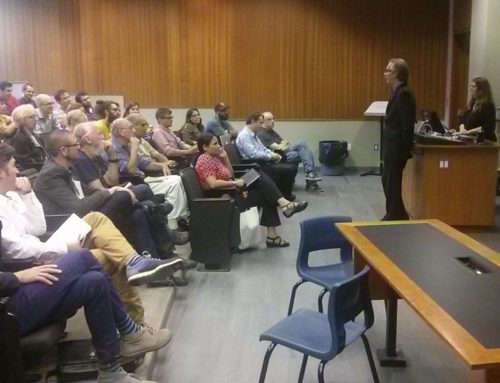I wish that I had suggested “Don’t be fooled” for the title of Gordon McBean’s blog post earlier this week, instead of “Don’t be misled,” so that I could call this one “Don’t be fooled again.”
Several of the blog posts in the past week have pointed to difficulties in communicating climate science to the public. One problem, I think, is that some media outlets seem not to hold columnists, bloggers, and authors of op-ed pieces to the same fact-checking standards that they apply to news stories. The upshot is that we find columnists making assertions that are simply false, even though they are readily checked. This has come up repeatedly in connection with columns about climate science in the Washington Post (see Joe Romm’s “Will the Washington Post ever fact check a George Will column?” and his other blog posts referenced therein). And it’s happened again, in connection with a blog entry from the Washington Post yesterday, entitled “Greenhouse gamble: Could IPCC’s adherence to climate models backfire?”
The point in contention has to do with how the newly-released Summary for Policymakers of the IPCC Working Group I treats the past fifteen years. If you average surface temperatures over the period 1998-2012 (which starts with a record-breaking hot year), there is a much smaller warming trend than if you average over longer periods. The columnist, Jason Samenow, suggests that the report is less than forthright about the fact that climate models failed to predict this.
He writes,
In its section on the evaluation of climate models, it points out models may have difficulty simulating the course of temperatures over short time periods, but doesn’t directly discuss what’s happening here and now. It merely says:
There are, however, differences between simulated and observed trends over periods as short as 10 to 15 years.
He goes on to say,
In the spirit of transparency and keeping the public’s expectations in check, the IPCC might have wanted to simply say something to the effect of (but in much more scientific language)… Global surface temperatures in the last 10-15 years have not warmed as fast as models projected. The possible reasons for this are x, y, and/or z. It is likely temperatures will resume warming at a faster clip, but if x,y, and/or z continue, it is possible this warming may be further delayed and the models will have been wrong and require recalibrating.
Unfortunately for the credibility of Samenow and of the Washington Post, it’s an easy matter for any reader to check the truth of what he says about the Summary for Policymakers, as it’s freely available online for anyone to download and read.
Samenow omits the end of the above-quoted sentence. What the report actually says is,
There are, however, differences between simulated and observed trends over periods as short as 10 to 15 years (e.g., 1998 to 2012).
This is followed by:
The observed reduction in surface warming trend over the period 1998–2012 as compared to the period 1951–2012, is due in roughly equal measure to a reduced trend in radiative forcing and a cooling contribution from internal variability, which includes a possible redistribution of heat within the ocean (medium confidence). The reduced trend in radiative forcing is primarily due to volcanic eruptions and the timing of the downward phase of the 11-year solar cycle. However, there is low confidence in quantifying the role of changes in radiative forcing in causing the reduced warming trend. There is medium confidence that internal decadal variability causes to a substantial degree the difference between observations and the simulations; the latter are not expected to reproduce the timing of internal variability. There may also be a contribution from forcing inadequacies and, in some models, an overestimate of the response to increasing greenhouse gas and other anthropogenic forcing (dominated by the effects of aerosols).
That is, the report does precisely what Samenow says it does not.
Note added Sept. 29.
I suspect that claims of this nature are going to proliferate on the denialist blogs. For instance, Benny Peiser’s Global Warming Policy Foundation has issued a press release entitled “GWPF Not Impressed: IPCC Fails To Come Clean Over Global Temperature Standstill,” which says,
The IPCC has decided to discount the global warming standstill since 1997 as irrelevant and has deleted from its final document its original acknowledgement (in its 7 June draft) that climate models have failed to ’reproduce the observed reduction in surface warming trend over the last 10-15 years.’
Which is, of course, a distortion; the sentence in question was not simply deleted, but was replaced by the one I already quoted. What we have in the approved version is,
The long-term climate model simulations show a trend in global-mean surface temperature from 1951 to 2012 that agrees with the observed trend (very high confidence). There are, however, differences between simulated and observed trends over periods as short as 10 to 15 years (e.g., 1998 to 2012).
The claim that the earlier acknowledgment that models didn’t predict the slowdown in increase of surface temperatures in the past 15 years was deleted from the final report has been echoed by FoxNews. and by Anthony Watts on his blog, Watts Up With That?, and no doubt will continue to reverberate through the denialist echo-chamber.





